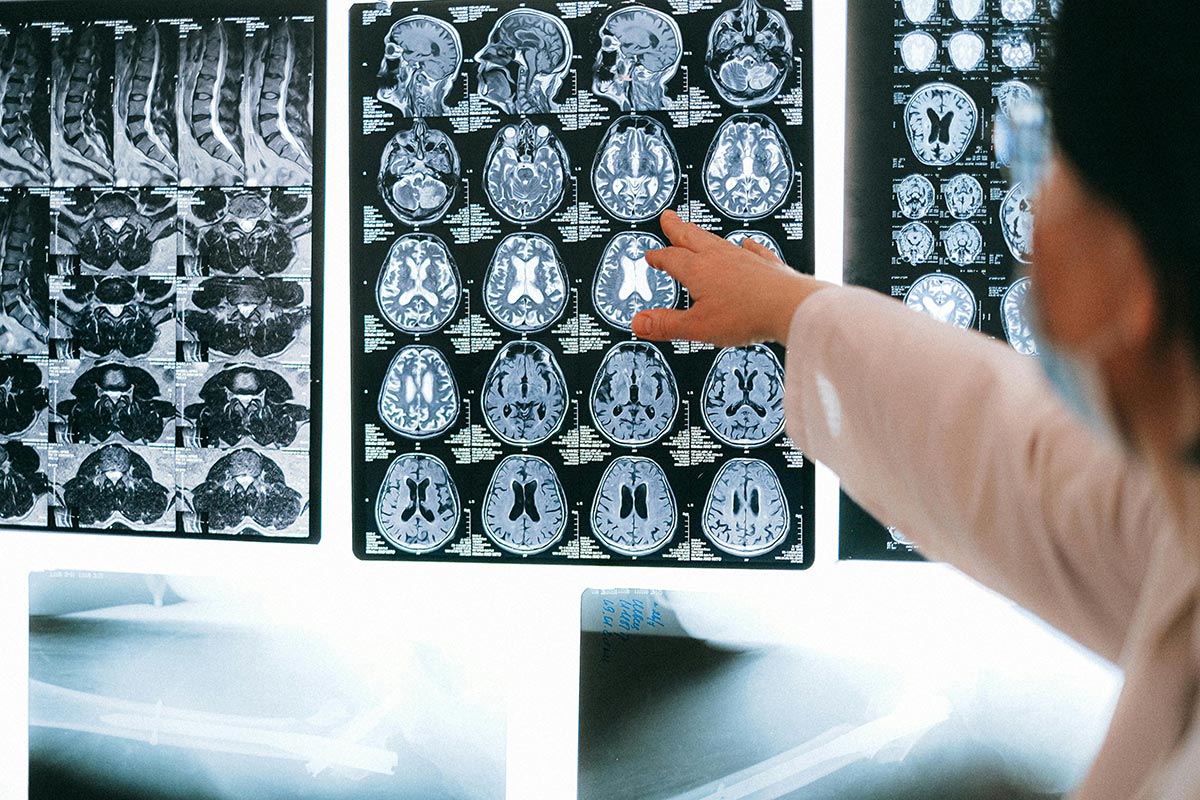

Handling Patients with Chronic Pain
Patients with chronic pain who require treatment for addiction present unique challenges for addiction hospitals. These hospitals employ specific strategies to effectively manage these individuals, focusing on screening tools for addictive disease and providing complimentary treatment guidance.
Screening Tools for Addictive Disease
In order to identify addictive disease in patients with chronic pain, addiction hospitals utilize screening tools. These tools have been developed to differentiate between addicted and nonaddicted patients based on responses to a questionnaire. By utilizing these screening tools, healthcare professionals can better understand the presence of addictive disease in this specific population.
These screening tools often consist of indicators that have been identified as excellent predictors of addictive disease in chronic pain patients. The results obtained from these tools aid in the formulation of personalized treatment plans, allowing addiction hospitals to provide tailored care based on individual needs.
Complimentary Treatment Guidance
Addiction hospitals, such as Acadia Healthcare, recognize the importance of providing comprehensive support for individuals with behavioral health and substance use concerns. Their Treatment Placement Specialists® team offers complimentary treatment guidance and referrals to empower clients in making informed treatment decisions [2].
The Treatment Placement Specialists® team at Acadia Healthcare provides tailored referrals and expert guidance, ensuring that individuals and families receive access to the most appropriate treatment options. They consider factors such as gender-specific programming and age-appropriate care, ensuring that treatment recommendations align with the specific needs of each patient [2].
Furthermore, the Treatment Placement Specialists® team conducts thorough vetting of programs to ensure ethical and clinical soundness. This meticulous process ensures that the recommended treatment programs meet high-quality standards of care.
By utilizing screening tools for addictive disease and providing complimentary treatment guidance, addiction hospitals can effectively handle patients with chronic pain. These approaches enable healthcare professionals to develop personalized treatment plans and offer appropriate guidance to individuals seeking recovery from addiction while managing their chronic pain.
Tailored Referrals and Specialized Services
In addiction hospitals, addressing the complex needs of patients with chronic pain requires a comprehensive approach. One aspect of this approach involves providing tailored referrals and specialized services to ensure that patients receive the most appropriate and effective treatment. Two important components of this approach are access to gender-specific programming and ethical and clinical program vetting.
Access to Gender-Specific Programming
At addiction hospitals, such as those within the Acadia Healthcare network, patients with chronic pain can benefit from access to gender-specific programming. This specialized approach recognizes that individuals may have unique needs and experiences based on their gender. By providing gender-specific programming, treatment recommendations can be tailored to address these specific needs and contribute to long-term healing.
Gender-specific programming offers a safe and supportive environment for patients to address their chronic pain and addiction concerns. These programs may incorporate therapeutic techniques and treatment modalities that are particularly relevant to the unique challenges faced by individuals of a specific gender. By creating a gender-specific space, addiction hospitals can create an atmosphere that promotes open and honest discussions, fosters trust, and encourages a sense of community among patients.
Ethical and Clinical Program Vetting
When handling patients with chronic pain, addiction hospitals prioritize the ethical and clinical standards of the programs they recommend. The Treatment Placement Specialists® team at Acadia Healthcare, for example, personally visits and vets each program to ensure that they meet high-quality standards for care recommendations. This rigorous vetting process helps to ensure that patients are referred to programs that are both ethically and clinically sound.
By personally evaluating and vetting programs, addiction hospitals can confidently recommend treatment options that align with the specific needs of patients with chronic pain. These programs may offer a range of evidence-based therapies, multidisciplinary approaches, and holistic treatment modalities. The goal is to provide patients with the most effective and comprehensive care available.
By providing access to gender-specific programming and conducting ethical and clinical program vetting, addiction hospitals can better meet the unique needs of patients with chronic pain. These tailored referrals and specialized services contribute to a patient-centered approach and enhance the overall quality of care provided. To learn more about how addiction hospitals manage chronic pain, continue reading the next section on risk assessment and nonpharmacologic treatment approaches.
Ongoing Support and Aftercare
In addiction hospitals, providing ongoing support and aftercare is essential for the successful management of patients with chronic pain. This involves maintaining communication during treatment and facilitating aftercare planning to ensure continued support and recovery.
Maintaining Communication During Treatment
The Treatment Placement Specialists® team at Acadia Healthcare recognizes the importance of ongoing communication during treatment. They maintain contact with clients and their care teams, ensuring a supportive relationship throughout the care journey. This continuous communication allows for personalized care and provides the opportunity to address any concerns or challenges that may arise.
By maintaining open lines of communication, addiction hospitals can monitor the progress of patients with chronic pain, assess their response to treatment, and make necessary adjustments to their care plan. Regular check-ins and updates help build trust between patients and their healthcare providers, fostering a collaborative approach to recovery.
Facilitating Aftercare Planning
Planning for aftercare is a crucial component of managing chronic pain in addiction hospitals. Aftercare involves the support and resources provided to patients once they complete their initial treatment program. It aims to ensure a smooth transition from the structured treatment environment to everyday life.
Addiction hospitals, such as those supported by the Treatment Placement Specialists®, play a vital role in facilitating aftercare planning and follow-up referrals [2]. They work closely with patients and their families to develop comprehensive aftercare plans tailored to the individual's needs.
Aftercare plans may include continued therapy, participation in support groups or self-help groups, vocational training and job placement services (the importance of vocational training and job placement services), and ongoing medical support. These plans are designed to provide ongoing support and help individuals with chronic pain maintain their recovery and overall well-being.
By focusing on ongoing support and aftercare, addiction hospitals aim to provide comprehensive care to patients with chronic pain. This ensures that they receive the necessary support not only during treatment but also throughout their recovery journey. The collaborative approach between patients, healthcare providers, and aftercare resources helps individuals with chronic pain manage their condition effectively and improve their overall quality of life.
Managing Chronic Pain in Addiction Hospitals

When it comes to managing chronic pain in addiction hospitals, a comprehensive approach is essential to ensure the well-being of patients. Two key aspects of this approach are risk assessment and stratification, as well as nonpharmacologic treatment approaches.
Risk Assessment and Stratification
Proper risk assessment and stratification are crucial in the treatment of patients with chronic pain and addiction. It is important to differentiate between addiction, substance abuse, and misuse. To achieve this, various tools can be utilized, including:
By implementing these tools, healthcare professionals can gather valuable information to assess the risk factors associated with chronic pain and addiction in patients. This information helps guide treatment decisions and ensure the safety and well-being of individuals [3].
Nonpharmacologic Treatment Approaches
Interventional pain management and nonpharmacologic treatments are recommended for patients with chronic pain and active opioid addiction. These approaches aim to address pain while minimizing the risk of addiction and dependence. Here are some nonpharmacologic treatment approaches that can be considered:
By utilizing nonpharmacologic treatment approaches, addiction hospitals can provide holistic care to patients with chronic pain, addressing both their physical and psychological well-being.
In addition to risk assessment and nonpharmacologic treatments, addiction hospitals employ various other strategies to effectively manage chronic pain in patients, ensuring they receive comprehensive care tailored to their unique needs. To learn more about assessment and monitoring tools used in addiction hospitals, check out our section on assessment and monitoring.
Medication-Assisted Therapy

In addiction hospitals, managing chronic pain in patients with addiction requires a comprehensive approach. One effective treatment modality is medication-assisted therapy, which involves the use of medications to address both the chronic pain and the addiction. Two commonly used medications in this context are methadone and buprenorphine.
Use of Methadone and Buprenorphine
Methadone and buprenorphine are opioids that are approved for the treatment of opioid addiction. However, they can also be used to manage chronic pain in patients with addiction. These medications provide pain relief while simultaneously addressing the underlying addiction.
Physicians in addiction hospitals who prescribe methadone and buprenorphine for chronic pain management must complete specialized training and adhere to specific regulations. This ensures that the medications are prescribed safely and appropriately. By utilizing these medications, healthcare providers can effectively alleviate pain in patients with addiction while minimizing the risk of misuse and diversion.
It's important to note that the decision to use methadone or buprenorphine should be made on an individual basis, taking into account the patient's specific needs, medical history, and treatment goals. The dosage and administration of these medications should be carefully monitored by healthcare professionals to optimize pain management and ensure patient safety.
Collateral Information and Consent
When handling patients with chronic pain in addiction hospitals, obtaining collateral information and consent is an essential part of the assessment process. Collateral information refers to additional information obtained from sources such as family members, pharmacists, and other clinicians. This information helps to gain a more comprehensive understanding of the patient's medical history, substance use, and pain management needs.
Clinicians in addiction hospitals must obtain full consent from the patient before discussing their condition with other individuals involved in their care. If a patient declines to give consent, it may impact the treatment plan, particularly if prolonged treatment with controlled substances is contraindicated. Maintaining transparency and open communication with the patient and their consented contacts is crucial for providing effective and safe care.
By incorporating collateral information and obtaining consent, healthcare providers in addiction hospitals can gather a more complete picture of the patient's chronic pain management needs and tailor their treatment accordingly. This comprehensive approach helps ensure that patients receive appropriate care while addressing both their chronic pain and addiction.
To accurately assess and monitor patients with chronic pain and addiction, addiction hospitals utilize standardized instruments. These instruments help to track pain levels, function, substance use, and other factors that are important in managing chronic noncancer pain in patients with substance use disorders. By using these tools, healthcare professionals can gather supplemental information for treatment planning, risk assessment, and evaluating treatment outcomes.
Additionally, healthcare providers may refer patients to substance use disorder specialists for further evaluation and management of their addiction. This collaboration ensures that patients receive comprehensive care for both their chronic pain and addiction in addiction hospitals.
In the next section, we will explore the assessment and monitoring methods used in addiction hospitals to ensure the effective management of chronic pain in patients with addiction.
Assessment and Monitoring
In addiction hospitals, the assessment and monitoring of patients with chronic pain play a crucial role in ensuring appropriate management of their condition. This involves using standardized instruments for tracking and referring patients to substance use disorder specialists when necessary.
Standardized Instruments for Tracking
To effectively manage chronic pain in patients with substance use disorders, addiction hospitals utilize standardized instruments to assess and track various factors. These instruments help evaluate pain levels, functional abilities, substance use, and other important aspects of managing chronic noncancer pain (CNCP) in patients with substance use disorders.
By using these standardized tools, clinicians can gather supplemental information for treatment planning, risk assessment, and monitoring treatment outcomes. This comprehensive approach allows for a more holistic understanding of the patient's pain experience and aids in tailoring treatment strategies accordingly.
Referral to Substance Use Disorder Specialist
In addiction hospitals, it is crucial to refer patients with chronic pain and substance use disorders for further assessment to a substance use disorder (SUD) specialist when an unacknowledged SUD is suspected. The collaboration between addiction hospitals and SUD specialists is essential in providing comprehensive care to high-risk patients.
Referring patients to SUD specialists ensures that any underlying substance use issues are addressed appropriately alongside their chronic pain management. Developing a strong referral network of substance abuse treatment clinicians allows for effective collaboration and coordinated care for patients in need.
Assessing substance use in patients with chronic pain involves corroborating patient self-reports through various sources, including medical records, family interviews, urine toxicology, and information from State prescription monitoring programs [4]. This comprehensive approach helps in evaluating substance use and addiction accurately, ensuring appropriate treatment planning and interventions.
Regular assessment and monitoring of patients with chronic pain are essential in addiction hospitals. Clinicians must assess these patients at regular intervals to monitor changes in treatment needs, evaluate the emergence of new factors, and assess alterations in cognitive functioning [4]. Ongoing assessment ensures that patients receive appropriate and individualized care for their chronic pain while considering their substance use disorder history.
By utilizing standardized instruments for tracking and referring patients to SUD specialists when necessary, addiction hospitals can provide comprehensive care for individuals with chronic pain and substance use disorders. This multidimensional approach allows for a more holistic understanding of the patient's needs and facilitates personalized treatment planning and interventions.
References
[2]:
[3]:
[4]:
.svg)





